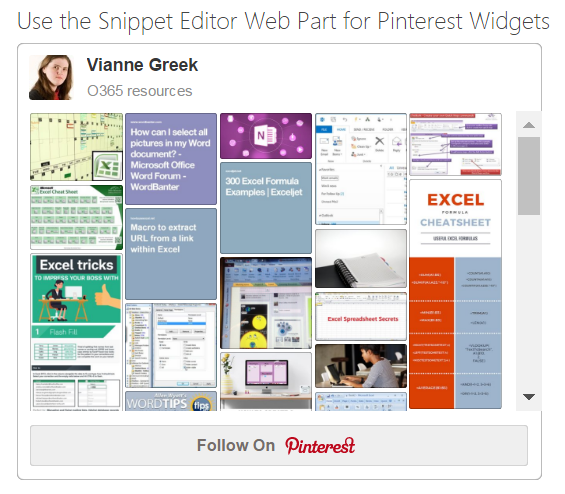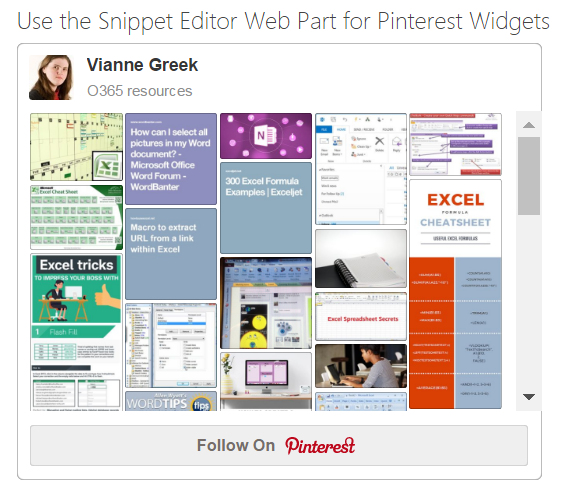There are all types of productivity tools out there, and I have blogged about Pinterest and its usefulness before as a work and productivity tool. I have been asked a few times about adding a Pinterest board to a SharePoint site, and I am pleased to say that it is possible to do so. As of today however, for some reason, the Pinterest board only shows in a SharePoint site in Chrome, Firefox, Edge, and various browsers on the Mac, but not in Internet Explorer.
If you plan on embedding Pinterest in your page, you may need to include a disclaimer that the user should view your page in a browser other than Internet Explorer. Considering we’re advocating people use Internet Explorer because certain things won’t work in other browsers, this is a bit of a deal breaker for me.
An alternative to embedding a Pinterest board would be to use the Promoted Links app to point to Pinterest boards. There will be a future post on using promoted links in this fashion.
In any case, the code for adding a Pinterest board to your SharePoint page can be found at the Pinterest Developers Site. You add the code to the SharePoint site using two Snippet Editor web parts, which are found under the Media and Content subsection of the INSERT WEBPART menu.




